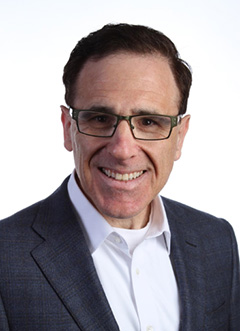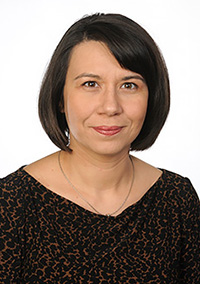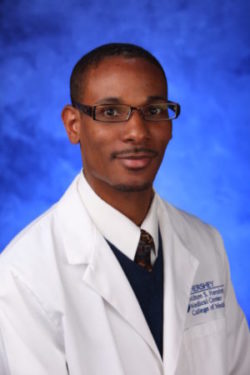Feb. 4, 2017:
Whether a basic scientist is driven to the clinic to share discoveries or a clinician is driven to the lab in search of answers, frontiers in oncology traverse two worlds: the lab and the clinic. Some researchers, like Sheldon L. Holder, MD, PhD, of the Penn State Cancer Institute, a member of the Big Ten Cancer Research Consortium, embody the best of both worlds. Through bold curiosity, teamwork, and an interdisciplinary perspective that not only solves problems, but does so with purpose, Holder exemplifies the Big Ten CRC’s commitment to engaging basic scientists in the development of clinical trials.
An empowered curiosity
Holder grew up on the Island of Bermuda, where his interest in medicine was sparked. “It began very early, almost as far back as I can remember. In second grade I came to school on career day dressed as a physician,” he said. “I do remember, specifically, when I became interested in cancer. My mother used to take us through the library weekly when I was in elementary school to get books. We got to choose whatever we wanted, and even then, I had an interest in the human body. I remember checking out a book about the human body that had one chapter on cancer, and I distinctly remember that it sparked an interest in me of what cancer is, how it develops, and how we treat it. I think that was really the initial spark that made me interested in oncology.”
An empowered dream
Holder moved to the United States where he completed undergraduate studies at Oakwood University in Huntsville, Ala. During this time, he focused almost exclusively on his goal of becoming a physician. But as he progressed through his studies, Holder also gained a passion for scientific research. “I had a desire and developed a plan to both train to be a physician and train to be a researcher or scientist. It seemed like a natural fit,” he said.
Holder completed medical school and his PhD at Loma Linda University. At Loma Linda, Holder worked in the lab of Michael B. Lilly, MD, and focused his dissertation on PIM1 kinase inhibition. “PIM1 kinase has been implicated in the development of several tumor types,” Holder said. “The idea is that if you develop inhibitors for PIM1, you can help treat some of these tumor types in new ways that we haven’t been able to treat them before. We were successful in developing and identifying some inhibitors, and I have continued to be interested in PIM1 as an oncogenic kinase and something we can target through new therapies.”
Holder then completed an internal medicine residency at the Penn State Milton S. Hershey Medical Center and a hematology/oncology fellowship at Vanderbilt University. After his fellowship, he was invited back to the Penn State Cancer Institute as a member of the faculty. He continues to investigate PIM1 in the lab, while seeing patients in clinic. “I see patients with genitourinary malignancies like kidney cancer, bladder cancer, or prostate cancer. So naturally, I’m investigating primarily PIM1 in those tumor types but not necessarily restricted to those. There are other malignancies which I think targeting PIM1 could be of clinical therapeutic benefit.”
The perfect fit
Acclimating to both the lab and clinic was natural for Holder. “For me, it is the perfect fit because I am able to satisfy my scientific curiosity, but at the same time I am able to see patients and make immediate impact on people who need medical attention.”
As a member of the Big Ten CRC’s Genitourinary Clinical Trial Working Group, Holder has found a natural camaraderie with fellow investigators at Big Ten CRC member institutions. “I get to meet with other clinicians and scientists who are also involved in cancer research,” he said. “It is a great benefit to talk to other people about your problems, your ideas, and how you are approaching those problems. There are ideas and different approaches that I have not thought about before.”
Through his work, Holder has observed some unique strengths of the Big Ten CRC. “One of the great benefits of the Big Ten CRC is that it is the perfect size to have enough critical mass to really get things done, but also it is intimate enough that you really know the other people with whom you are working,” he said.
“The consortium allows for collaboration,” Holder continued. “Sometimes there are things that other scientists or clinicians are doing at their institutions and already doing well. Rather than trying to duplicate that at my institution, we can collaborate to get the work done faster and not try and reinvent the wheel.”
Each Big Ten CRC clinical trial working group allows investigators to submit a letter of intent for the committee’s review. Concepts approved by each working group may then proceed to development as Big Ten CRC studies. Holder said committee approval can be helpful when identifying sources of funding for a study. “I think it helps when you need third party approval or support to be able to have the backing of the Big Ten CRC,” he said. “It helps to make a stronger application when you go to a drug company because they can see that you are not just one institution; it is multiple institutions that have a wide array of expertise, a track record of success in opening and completing trials, and an infrastructure that has already been proven.”
Holder recently brought a concept to the working group based only on benchwork and preclinical data. “I presented it to the working group, and then talked about the clinical trial I would like to open based on that benchwork and pre-clinical data,” he said. “There is definitely the opportunity for investigators who have preclinical research to translate that into a clinical trial through the working group.”
Holder’s translational perspective shapes his expectations for the future of oncology. “In the next five to ten years we’re going to do an even better job at identifying what is driving an individual’s cancer to continue to grow and then targeting that abnormality with some kind of therapy that works specifically because it targets that specific abnormality and that person’s cancer,” Holder said. “I think what it is actually going to be is a combination of targeting whatever the abnormality is that’s making the cancer grow but also immunotherapy – recruiting the immune system to help kill the cancer. I think we will be doing both and find ways in which combining both strategies is going to be better than doing either one by itself.”
Click here to join a Big Ten Cancer Research Consortium Clinical Trial Working Group.
About the Big Ten Cancer Research Consortium: The Big Ten Cancer Research Consortium was created in 2013 to transform the conduct of cancer research through collaborative, hypothesis-driven, highly translational oncology trials that leverage the scientific and clinical expertise of Big Ten universities. The goal of the Big Ten Cancer Research Consortium is to create a unique team-research culture to drive science rapidly from ideas to new approaches to cancer treatment. Within this innovative environment, today’s research leaders collaborate with and mentor the research leaders of tomorrow with the unified goal of improving the lives of all patients with cancer.
About the Big Ten Conference: The Big Ten Conference is an association of world-class universities whose member institutions share a common mission of research, graduate, professional and undergraduate teaching and public service. Founded in 1896, the Big Ten has sustained a comprehensive set of shared practices and policies that enforce the priority of academics in the lives of students competing in intercollegiate athletics and emphasize the values of integrity, fairness and competitiveness. The broad-based programs of the 14 Big Ten institutions will provide over $200 million in direct financial support to almost 9,500 students for more than 11,000 participation opportunities on 350 teams in 42 different sports. The Big Ten sponsors 28 official conference sports, 14 for men and 14 for women, including the addition of men’s ice hockey and men’s and women’s lacrosse since 2013. For more information, visit http://www.bigten.org/.




















Subscribe to the Big Ten CRC Newsletter X
X Facebook
Facebook YouTube
YouTube